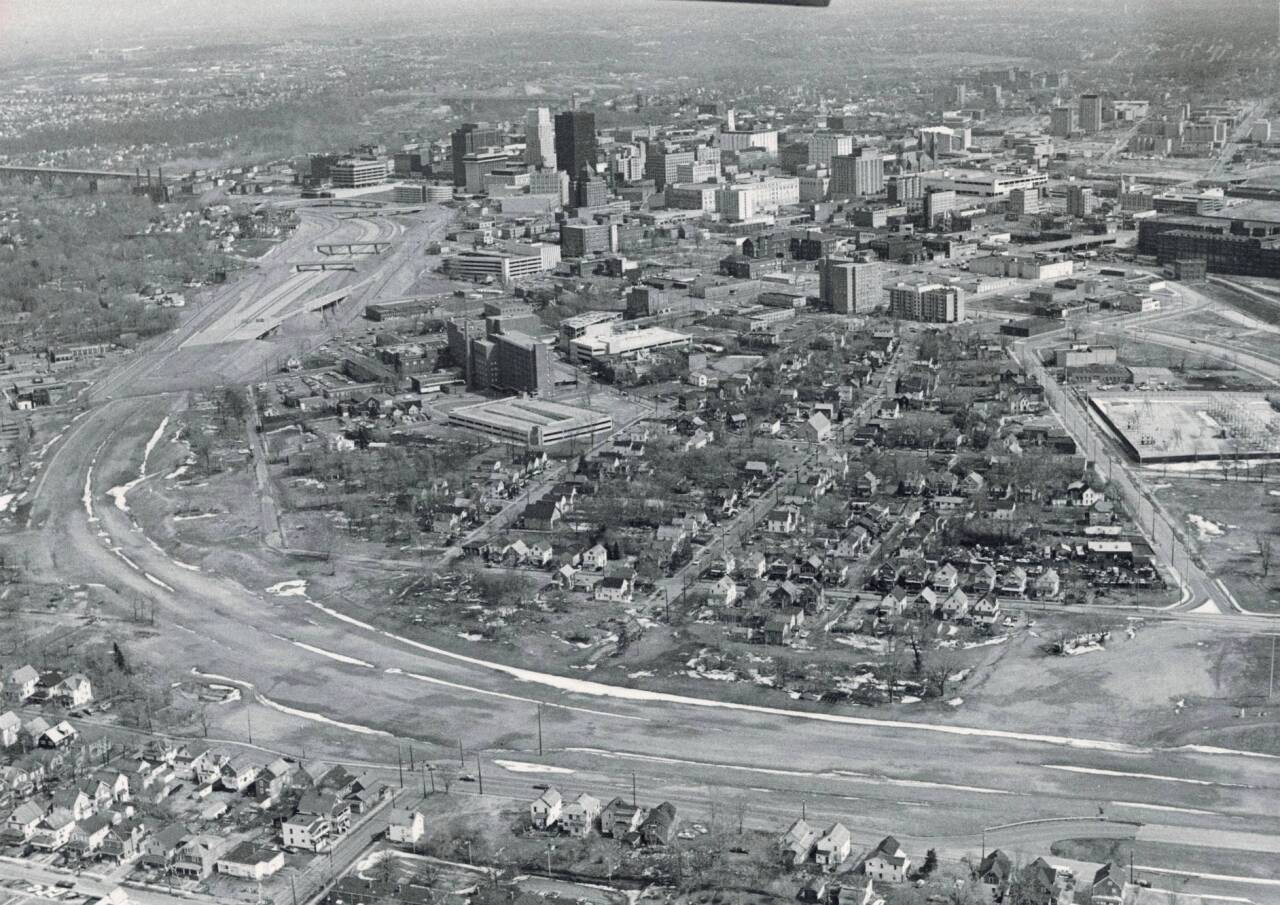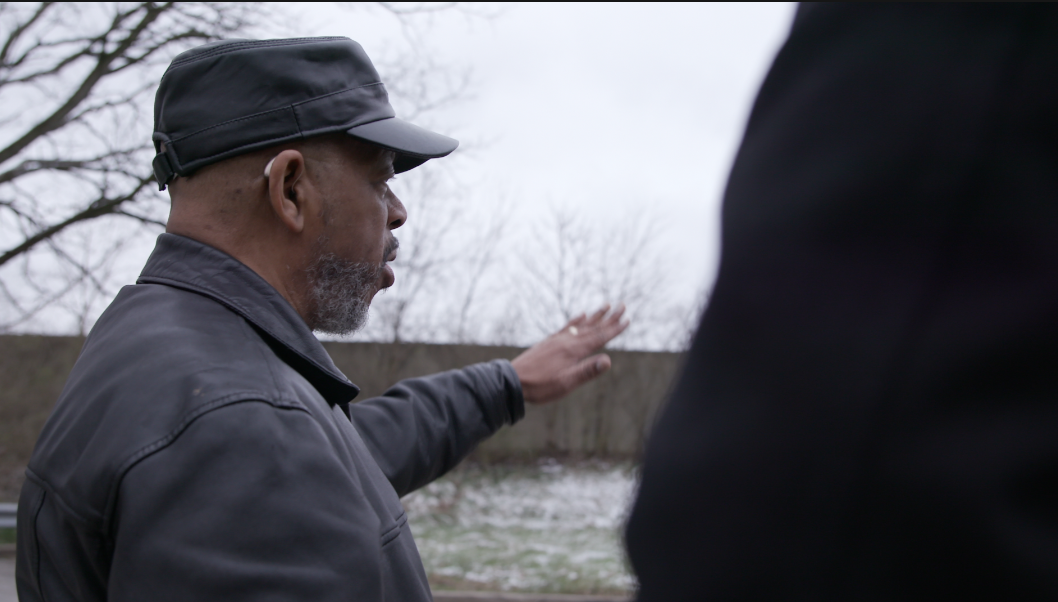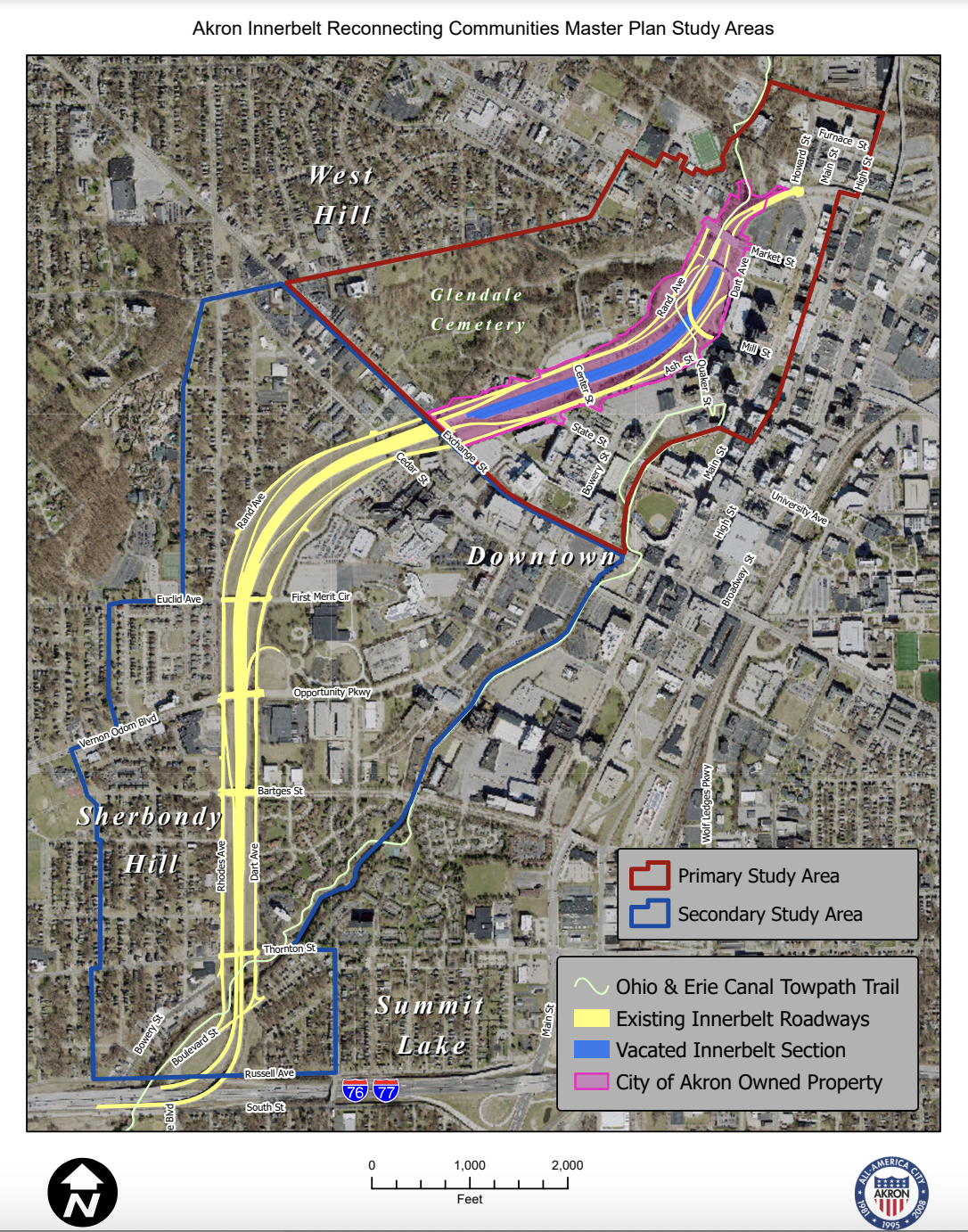AKRON, Ohio — Mayor Shammas Malik announced plans during his State of the City to try to hire a firm and design what could go in place of the abandoned 30-acre stretch that formerly served as part of the Akron Innerbelt.
"It's an opportunity for a new beginning," he said. "We are going to work hand in hand with the community to determine what’s next for this area, working with residents - not to them."
How we got here
City leaders decommissioned the Innerbelt in 2017.
"When the rubber industry was booming, our population was growing astronomically," Suzie Graham Moore, Akron Director of Economic Development, said. "We were the fastest growing community across the nation. The idea of creating new infrastructure seemed like a great idea at the time."
"The Innerbelt was part of that mid 20th century planning imperative you have to create a blank slate in order to move a city forward," Kyle Julien, Akron Director of Planning, said. "You had to wipe things out."
However, the growth the city counted on stalled out when the rubber industry started to decline.
In fact, after years and years of delayed construction, the Innerbelt never connected all the way north to Route 8 as intended.
Julien told News 5 that the completed stretch of highway was meant to accommodate more than 100,000 cars a day. At its peak, he said it never saw more than 25,000 cars a day.
As for what the future of the space could look like, that's what the next several years will entail.
Last year, Akron received nearly $1 million from the Department of Transportation to start looking at what’s possible.
"We’re not anywhere near ready to say what it will look like," Julien said. "Everything is on the table. It’s incredibly difficult. You see the slopes we’re going to have to deal with. We’ve got a north-south dead zone but what are the east-west solutions?"
Julien told News 5 that once a firm is picked, it's expected to take 12-14 months to complete a design and figure out what can go in place of the Innerbelt.
The damage done by the Akron Innerbelt
Nowadays, a one-mile-long stretch of the Innerbelt sits empty, filled with nothing more than painful memories sunken into Akron, and city leaders are working to change that.
"Was this a mistake - absolutely," Graham Moore said, referencing that any future development must have the community in mind. "The process of putting in the Innerbelt devastated the community. So if we look at it solely as a property to be developed, we completely miss the opportunity to talk about what happened and learn from the mistakes that happened in the past."
The city has created a website highlighting the project as well as its historical background, showcasing the impact it had on the community.

The highway came with a high price tag beyond just what appeared on invoices, given crews demolished more than 700 homes and more than a hundred businesses in the 1970s and 1980s to make room for the Akron Innerbelt.
Homes that a 1963 city report called “blighted” and warranted “total clearance.”
Akron’s Diversity Equity and Inclusion Director Esther Thomas points to historic landmarks, like the Hotel Mathews that hosted Ella Fitzgerald and Louis Armstrong, that suggest otherwise.
"This disrupted a thriving vibrant community that was primarily African American," she said. "If you look at a map of Akron, this is this scar. The harm it did. It impacted generational wealth."
Remembering life before the Innerbelt
Change can be difficult to pinpoint. But 50 years later, Bishop Joey Johnson admits it's obvious where it all went wrong growing up on Douglas Street in Akron.
His childhood home sits right next to the Innerbelt, which cut through his neighborhood.

"There was the neighborhood that went on that way for a good 3-4 miles," he said.
"That wall is a barrier and it kind of shuts you out and off from everything else that's going on the other side," Johnson said. "As far as you're concerned, that can be the other side of the world. You can't see over there, you can't go over there."
Johnson is just one of the individuals featured on Akron's Innerbelt website as part of an effort to preserve memories of how the Innerbelt displaced families.
In Johnson's case, his parents watched as neighbors received offers for their homes and a chance for a new beginning.
"I remember just waiting," Johnson said. "I guess we're gonna be moving? I guess we're not. It was painful. The Innerbelt was just a nightmare, not knowing what was happening, if your house was gonna be taken. Some houses were taken, some were left."
While many families were paid to leave, his family and their home were not picked, leaving them behind in the dust of construction.

"So what do we do now," Johnson said. "All that time your property values are falling. People are moving out. It's not a good scene."
Johnson's family moved out of the neighborhood, along with everyone else he knew on the street.
"I have no reason to come down here," he said. "I don't know anybody over here anymore. That's what happens when you displace neighborhoods. The people get removed and displaced all over the place."
As for what's next, Johnson isn't sure what exactly should replace this narrow concrete jungle, but he's excited at the prospect of fixing the problem.
"I think that we need to reclaim that property, re-purpose it so that something good can come out of it and allow the people who have been displaced to come back and to see it and to celebrate something worthwhile," he said.
Clay LePard is a special projects reporter at News 5 Cleveland. Follow him on Twitter @ClayLePard or on Facebook Clay LePard News 5.
Download the News 5 Cleveland app now for more stories from us, plus alerts on major news, the latest weather forecast, traffic information and much more. Download now on your Apple device here, and your Android device here.
You can also catch News 5 Cleveland on Roku, Apple TV, Amazon Fire TV, YouTube TV, DIRECTV NOW, Hulu Live and more. We're also on Amazon Alexa devices. Learn more about our streaming options here.




